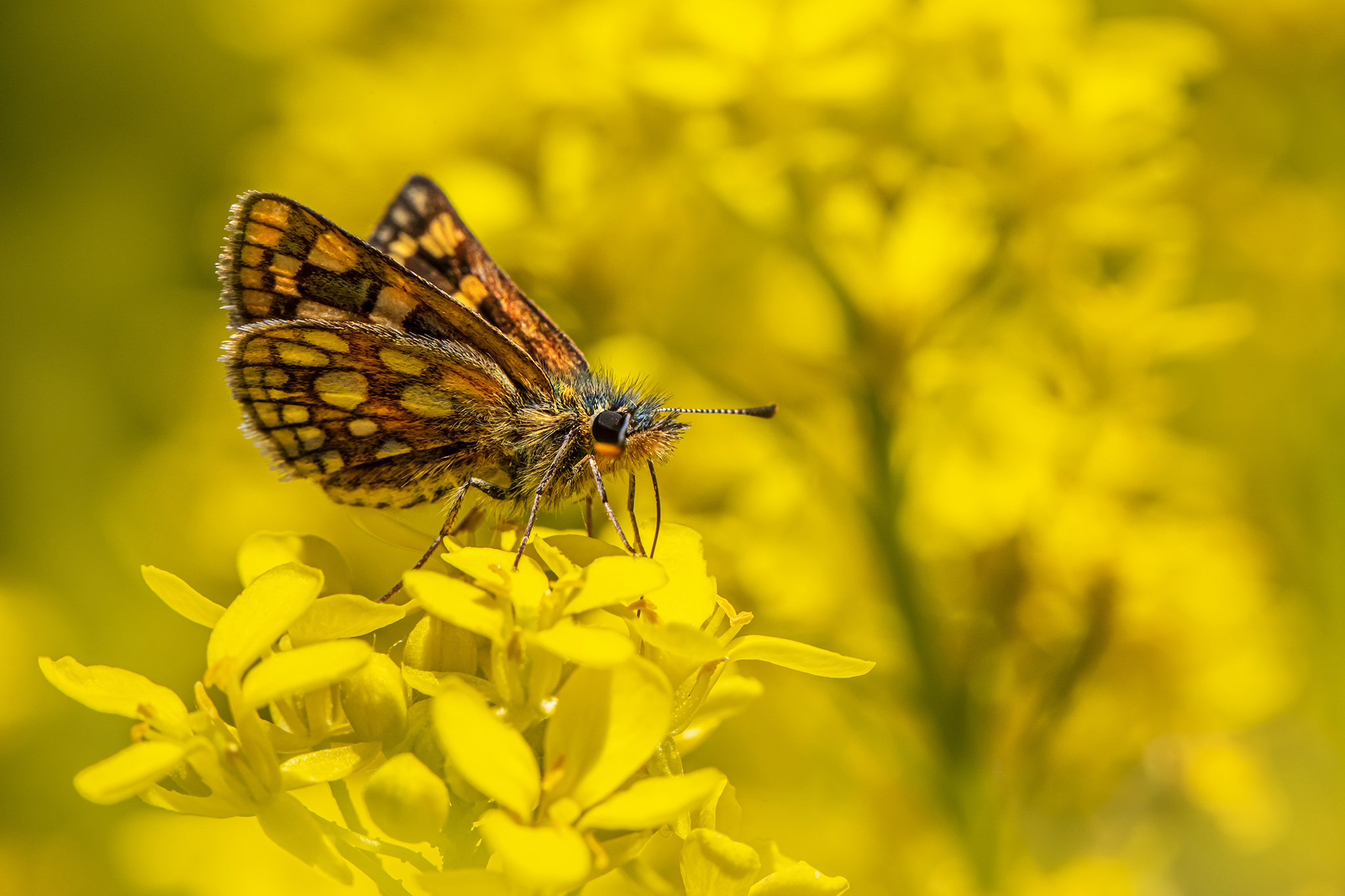The skipper butterfly is a member of the family Hesperiidae, which is one of the largest families of butterflies. Here are some key characteristics and facts about skipper butterflies:
- Appearance: Skipper butterflies are generally small to medium-sized butterflies with stout bodies and relatively large wings compared to their body size. They are often brown, orange, or yellow in color, with various patterns and markings on their wings. Their wings may have spots, bands, or other distinctive markings.
- Habitat: Skipper butterflies are found in a wide range of habitats, including grasslands, meadows, prairies, woodlands, and gardens. They are particularly abundant in areas with plenty of nectar-rich flowers and suitable host plants for their caterpillars.
- Behavior: Skipper butterflies are known for their rapid and darting flight, which gives them their name. They are strong fliers and can be quite agile in flight. Unlike some other butterfly species, skippers tend to hold their wings partially or fully open when at rest.
- Diet: As adults, skipper butterflies primarily feed on nectar from flowers, using their long proboscis to extract the sweet liquid. Some species also feed on rotting fruit or sap. As caterpillars, they feed on a variety of host plants, which can vary depending on the species.
- Life Cycle: Like all butterflies, skippers undergo complete metamorphosis, with four distinct stages: egg, larva (caterpillar), pupa (chrysalis), and adult. The timing of each stage varies depending on the species and environmental conditions.
- Diversity: The skipper family (Hesperiidae) is one of the largest families of butterflies, comprising over 3,500 species worldwide. They are found on every continent except Antarctica, with the highest diversity in tropical regions.
- Ecological Role: Skipper butterflies play important roles in pollination and ecosystem functioning. As they feed on nectar, they inadvertently transfer pollen from one flower to another, facilitating plant reproduction. Additionally, skipper caterpillars serve as food sources for various predators, contributing to the overall biodiversity of their ecosystems.
- Conservation: While some skipper species are common and widespread, others are more localized or threatened due to habitat loss, pesticide use, and other factors. Conservation efforts aimed at protecting their habitats and promoting habitat restoration can help safeguard skipper butterfly populations.
Overall, skipper butterflies are fascinating insects with diverse characteristics and behaviors, making them important components of many ecosystems worldwide.
Views: 48
Subscribe to the newsletter:
